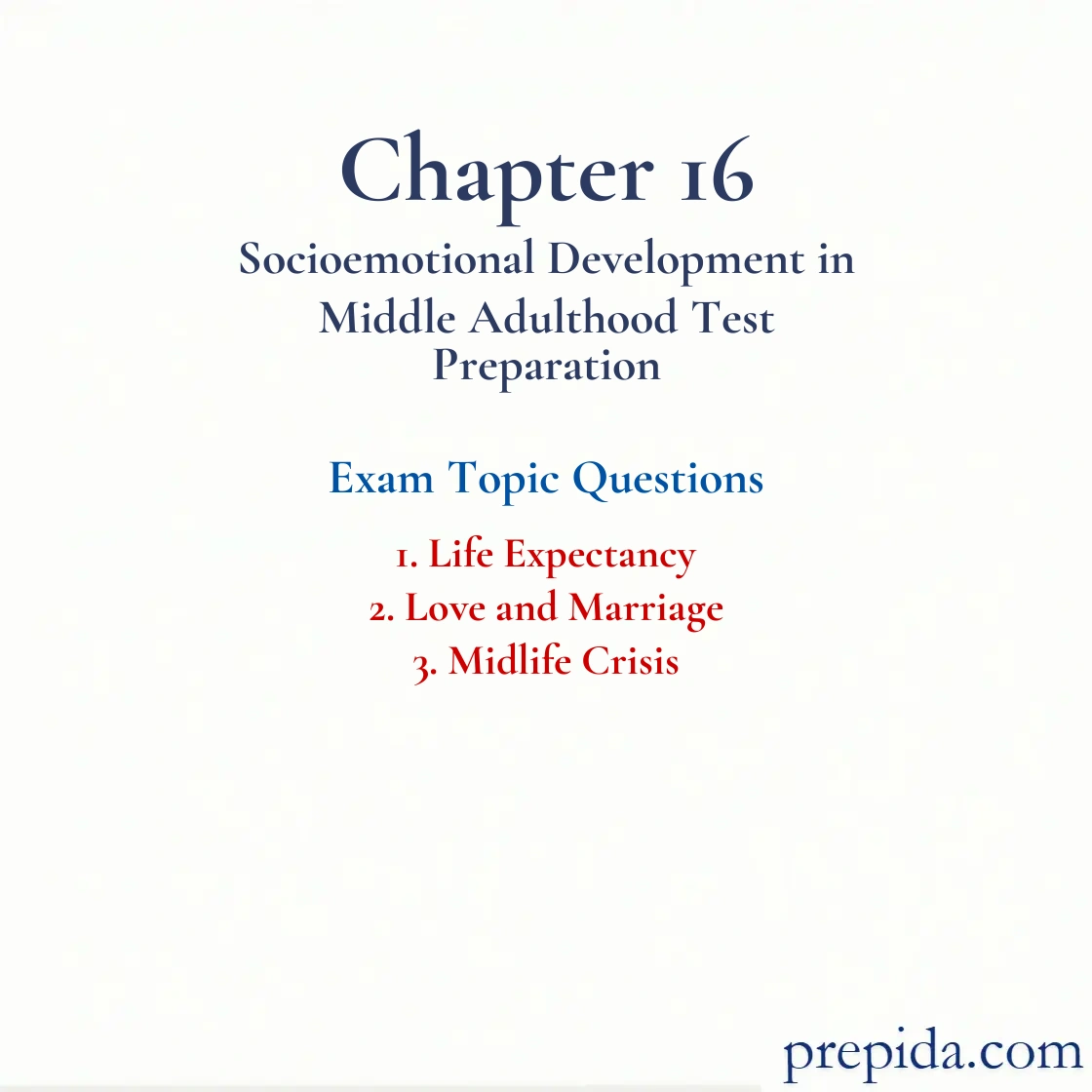
Vaillant's research showed that at age 50, the best predictors of who would be dead at 75 to 80 years of age were
- chronic depression and cardiovascular disease.
- diabetes and depression.
- alcohol abuse and smoking.
- smoking and obesity.
Addiction: A pattern of behavior characterized by an overwhelming involvement with using a drug and a preoccupation with securing its supply.
Humberto and Xanat are a middle-aged couple. They have been married for 25 years. They view their marriage as a positive experience. According to a study by Gorchoff, John, and Helson, it is likely that they
- have a satisfying sexual relationship.
- feel a high level of physical attraction toward each other.
- engage in mutual activities.
- are religious.
Activity Theory: The theory that the more active and involved older adults are, the more likely they are to be satisfied with their lives.
Middle-aged Americans agree that a major component of their well-being involves
- physical health.
- positive relationships.
- recovering from a midlife crisis.
- a stable financial situation.
What are the two major forms of love?
- passionate and intimate
- companionate and consummate
- romantic and affectionate
- sexual and noncommittal
Affectionate Love: In this type of love, also called companionate love, an individual desires to have the other person near and has a deep, caring affection for the other person.
Cathy and Miguel have been dating for 6 months. Which of the following is likely to be LEAST important in their relationship considering that both are in early adulthood?
- passion
- loyalty
- physical attraction
- romance
Don and Ellie have been married for over 30 years. Which of the following is likely to be MOST important in their relationship?
- romance
- passion
- infatuation
- security
Which of the following is a major difference between Levinson's and Vaillant's views on midlife?
- Unlike Vaillant, Levinson believes that only males experience a midlife crisis.
- Unlike Levinson, Vaillant maintains that only a minority of adults experience a midlife crisis.
- Levinson maintains that the transition period to midlife is 6 years, while Vaillant holds it to be 8 years.
- Unlike Levinson, Vaillant's study was mainly focused on white, middle-aged, male population within the upper SES of society.
Crisis: Marcia’s term for a period of identity development during which the adolescent is exploring alternatives.
Adult development experts are virtually unanimous in their belief that midlife crises
- have been validated.
- have been exaggerated.
- have no cross-cultural validity.
- have been underestimated.
Which of the following acts as the focus of stage theories trying to explain midlife?
- universals of adult personality development
- gender differences in adult personality development
- individual variations in adult development
- cultural variations in adult personality development
Big Five Factors of Personality: Emotional stability (neuroticism), extraversion, openness to experience, agreeableness, and conscientiousness.
Which of the following is a shortcoming of stage theories of adult development?
- They do not adequately address universals of adult personality development.
- They do not adequately address individual variations in adult development.
- They place far too much importance on cultural variations in adult development.
- They place too much importance on individual variations in adult development.
Individual Differences: The stable, consistent ways in which people differ from each other.
According to Lachman, researchers have found that in one-third of the cases in which individuals have reported going through a midlife crisis, the crisis
- varies between men and women.
- leads to emotional instability.
- is related to aging.
- is triggered by life events.
Crisis: Marcia’s term for a period of identity development during which the adolescent is exploring alternatives.
Daniel Levinson's studies suggest that most adults feel that middle age is a time of
- crisis.
- reconsolidation.
- peace and tranquility.
- intimacy and social closeness.
Crisis: Marcia’s term for a period of identity development during which the adolescent is exploring alternatives.
Jenna is reevaluating and recording the facts about her adolescent and adulthood years. According to the Grant Study by George Vaillant, Jenna is most likely in her ________.
- 40s
- 50s
- 60s
- 30s
A-not-B Error: Error that occurs when infants make the mistake of selecting the familiar hiding place (A) rather than the new hiding place (B) of an object.
George Vaillant concludes that ________ is a time for detecting parental flaws and discovering the truth about childhood.
- adolescence
- late adulthood
- middle adulthood
- old age
Adolescent Egocentrism: The heightened self-consciousness of adolescents.